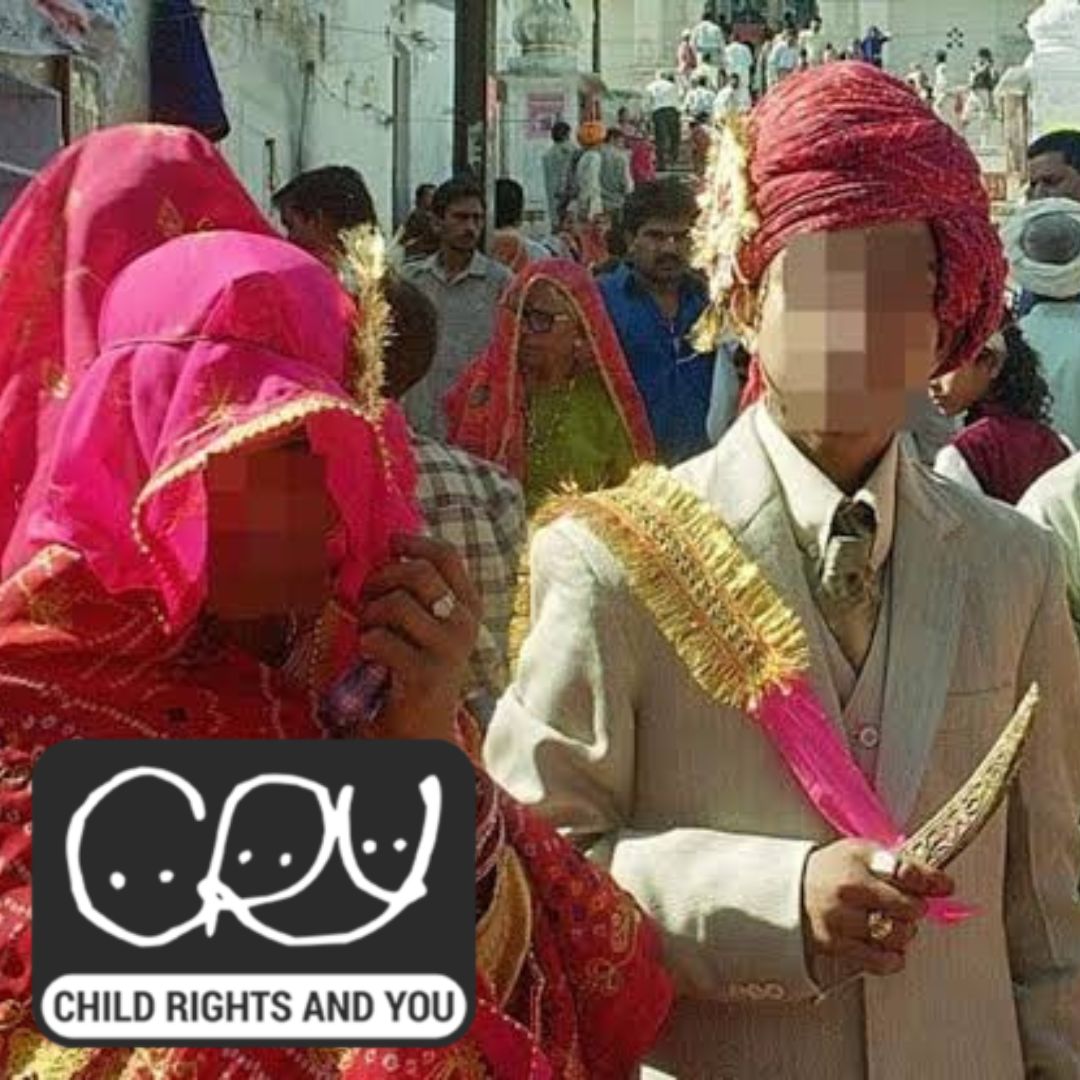
Image Credits: Wikipedia and Hindustan Times (representational)
About 3 Out Of 5 Child Brides Went Through Teenage Pregnancy, Reveals CRY Report
Writer: Laxmi Mohan Kumar
She is an aspiring journalist in the process of learning and unlearning many things. Always up for discussions on everything from popular culture to politics.
India, 17 Nov 2022 7:23 AM GMT
Editor : Jayali Wavhal |
She writes about gender issues, human interest, and environment.
Creatives : Laxmi Mohan Kumar
She is an aspiring journalist in the process of learning and unlearning many things. Always up for discussions on everything from popular culture to politics.
In the study conducted in over 40 villages, it was found that about three out of every five child marriages landed up in teen pregnancies, posing a detrimental impact on the girl child's sexual and reproductive health.
The findings of a survey conducted by Child Rights And You (CRY), a non-governmental organisation (NGO), revealed that three out of every five child brides went through teenage pregnancy, bringing a detrimental impact on their sexual and reproductive health. The survey was conducted as a part of a larger study across 40 villages from four districts across four states -- Chittoor in Andhra Pradesh, Chandouli in Uttar Pradesh, Parbhani in Maharashtra, and Kandhamal in Odisha.
The study, which was initiated on the occasion of Children's Day and Child Safety Week, will be ongoing until November 20. From the survey done so far, the NGO has revealed several disturbing revelations in regard to underage marriages.
Married Off To Protect "Woman's Honour"
The study was able to trace back the majority of child marriages to social norms and regressive practices. Factors that paved the way to it included extreme poverty, forced migration, and gender inequity. It also showcased how the lack of resources, such as educational opportunities due to issues of accessibility, availability, and affordability, forced many girl students to drop out. This made them even more vulnerable to child marriage in comparison to boys.
A good share of parents feared that a girl child who was made to stay back at home would elope or get involved in love affairs that could lead to premarital sex and pregnancy. In order to avoid such scenarios, the parents married off the daughters as soon as they attained puberty.
Puja Marwaha, the CEO of CRY, said that the data helped them study the prevailing knowledge, attitudes, practices, and social behaviour that influenced such large-scale child marriages and teenage pregnancies. Through the study, they could deduce that in a rush to protect the patriarchal construct of a 'woman's honour,' they found grooms and married them off with lower dowry.
Only about 16 per cent of parents and in-laws and 34 per cent of child brides or grooms were aware of the negative consequences of child marriage. Even these minuscule per cent of stakeholders were driven into the age-old custom out of societal pressure and vulnerable conditions, despite the community-level initiatives that were active in the villages to curb child marriage practices.
Child Brides And Their Children At Health Risk
Most child brides who became mothers before reaching adolescent age faced issues regarding their sexual and reproductive health after being exposed to high-risk pregnancies. About 59 per cent of respondents experienced teenage pregnancy, and 51 per cent of them conveyed that the gap between their first two children was less than two years.
Apart from impacting the mother's health, such high-risk cases also have adverse effects on the newborn. This was reflected within the study as well, which indicated that a sizable proportion of adolescent mothers reportedly gave birth to babies with low birth weights.
Mapping A Pattern
Further, upon mapping the cases region-wise, the instances of child marriage were seen to be more prevalent in regions of Andhra Pradesh, Uttar Pradesh, and Odisha, even though there was a considerable decline in comparison to the data from the past few years. A comparative analysis of the National Family Health Survey (NFHS) 2015-16 and 2019-21 backed this finding and suggested that child marriage cases declined over the past five years at a national level, even though the pace of decline was slow.
According to Marwaha, these findings also imply how the "public health emergencies such as pandemics and calamities may have a significant impact on increasing vulnerabilities, putting many children, particularly girls, at risk of marrying at an early age".
The national average mean age for effective marriage of females during child marriage stood at 16.5 years old, and a good majority of girl children were married off between the age of 16-18. Meanwhile, data from Andhra Pradesh -- which has the highest number of teen pregnancies -- had women between the age group of 15 to 19 reporting pregnancies out of child marriage.
Need For Strengthened Solutions
A report by the New Indian Express quoted Marwaha stating that the way forward would be visible only through strengthened village-level child protection mechanisms by the government and civil society organisations. Moreover, continuous efforts have to be put in to sustain such measures with a focus on alleviating the causes of child marriage from the grassroots level. This includes addressing issues of poverty and social inequality from a bigger lens. From the study conducted, Marwaha deduced that "creating livelihood options are some of the ways which will go a long way in to address child marriage."
Another area of scope the organisation addressed was increased access to girl child education. The study revealed that at least 86 per cent of child brides who attended school had to drop out after their marriage. Ensuring that their schooling is retained till the age of 18 would help educate the girls as well as play a pivotal role in reducing child marriages.
Also Read: Child Marriages Kills 60 Girls Per Day Globally From Pregnancy, Childbirth: Report
 All section
All section














